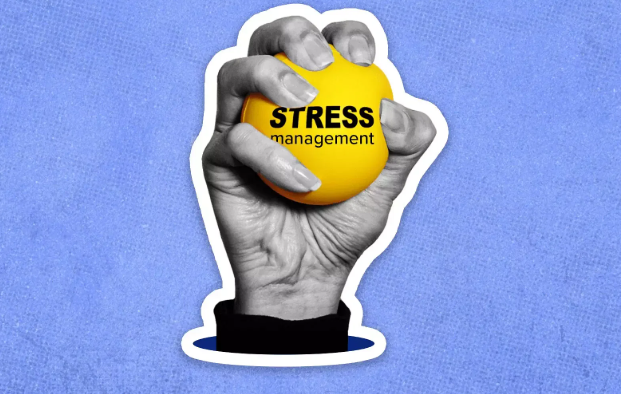Introduction
Fibromyalgia is a chronic pain disorder that affects the muscles, joints, and nervous system, causing widespread pain, fatigue, and cognitive difficulties. It is commonly described as occurring in stages, ranging from mild (Stage 1) to severe (Stage 4).
So, what is Stage 2 fibromyalgia? This stage represents a noticeable worsening of symptoms, making it harder to ignore. Pain becomes more persistent, fatigue increases, and daily activities require more effort. While still manageable, Stage 2 signals that lifestyle changes and medical intervention are crucial to prevent further deterioration.
In this article, we’ll explore the symptoms, causes, and management strategies for Stage 2 fibromyalgia, helping you take proactive steps to maintain your quality of life.
What Is Stage 2 Fibromyalgia?
Progression from Stage 1 to Stage 2
In Stage 1 fibromyalgia, symptoms are mild and intermittent, often mistaken for stress or overexertion. However, in Stage 2, symptoms become more consistent and intense, making them harder to ignore.
You might notice:
More frequent and widespread pain
Increased fatigue, even after resting
Greater difficulty with concentration and memory
Emotional sensitivity, including anxiety and mood swings
How It Differs from Early-Stage Fibromyalgia
Unlike Stage 1, where symptoms are occasional, Stage 2 fibromyalgia:
✔ Causes daily pain and fatigue
✔ Leads to sleep problems and cognitive issues (“fibro fog“)
✔ Requires more adjustments to lifestyle and daily routine
Without proper management, symptoms may worsen over time, progressing to Stage 3 fibromyalgia.
Common Symptoms of Stage 2 Fibromyalgia
1. Increased Pain and Sensitivity
- Pain becomes more persistent and occurs in multiple body areas.
- Increased sensitivity to touch, temperature, and sounds.
- Pain may be triggered by weather changes, stress, or overexertion.
2. Persistent Fatigue and Sleep Disturbances
- Feeling exhausted even after a full night’s sleep.
- Increased muscle stiffness in the morning.
- Difficulty falling asleep due to pain and restlessness.
3. Worsening Brain Fog and Cognitive Issues
- Trouble focusing on tasks or remembering things.
- Slower processing speed and difficulty finding words.
- Increased frustration when trying to concentrate.
4. Mood Changes and Emotional Sensitivity
- Heightened anxiety and depression.
- Mood swings, feeling overwhelmed by small stressors.
- Increased sensitivity to criticism or emotional triggers.
How Is Stage 2 Fibromyalgia Diagnosed?
Medical Criteria and Assessment
Doctors diagnose fibromyalgia using:
Widespread Pain Index (WPI) – Determines pain severity and affected body areas.
Symptom Severity Scale (SSS) – Evaluates fatigue, cognitive issues, and sleep disturbances.
Patient History – Reviewing past symptoms and medical conditions.
Tests to Rule Out Other Conditions
Since fibromyalgia shares symptoms with other disorders, doctors may conduct tests to rule out:
Rheumatoid arthritis
Lupus
Multiple sclerosis (MS)
Thyroid disorders
Can Stage 2 Fibromyalgia Be Reversed?
Possibility of Symptom Stabilization
While fibromyalgia is not curable, Stage 2 symptoms can be managed effectively. Some people experience symptom stabilization or even improvement with the right approach.
Factors That Influence Symptom Progression
The severity of fibromyalgia depends on lifestyle and environmental factors. Common triggers include:
Chronic stress
Lack of sleep
Inactivity or excessive physical strain
Inflammatory diet
Making positive changes can prevent the condition from progressing further.
Best Management Strategies for Stage 2 Fibromyalgia
1. Lifestyle Changes and Physical Activity
- Engage in low-impact exercises like walking, swimming, or yoga.
- Avoid overexertion, as too much exercise can trigger flare–ups.
- Maintain a consistent daily routine to reduce stress on the body.
2. Nutrition and Anti-Inflammatory Diet
- Eat whole foods, including fruits, vegetables, and lean proteins.
- Reduce processed foods, sugar, and caffeine to minimize inflammation.
- Stay hydrated and consider omega-3 supplements for joint health.
3. Stress Management and Relaxation Techniques
- Practice deep breathing, meditation, or progressive muscle relaxation.
- Engage in hobbies or creative activities to reduce anxiety.
- Seek therapy or support groups for emotional well-being.
4. Medications and Alternative Therapies
- Pain relievers and antidepressants may be prescribed.
- Consider acupuncture, massage therapy, or hydrotherapy for pain relief.
- Magnesium and vitamin D supplements can help with muscle function.
Frequently Asked Questions (FAQs)
Can Stage 2 Fibromyalgia Improve?
Yes! With proper self-care, therapy, and lifestyle adjustments, symptoms can stabilize or even improve.
How Long Does Stage 2 Fibromyalgia Last?
It varies—some people stay in Stage 2 for years, while others progress to Stage 3 if symptoms worsen.
What Triggers Fibromyalgia to Worsen?
Common triggers include:
Stress and emotional trauma
Poor diet and lack of exercise
Sleep deprivation
Is Fibromyalgia in Stage 2 Considered Severe?
It is moderate, but it significantly affects daily life and requires lifestyle adjustments.
Does Medication Help with Stage 2 Fibromyalgia?
Medication can help reduce pain and improve sleep, but lifestyle changes are equally important.
Conclusion
Stage 2 fibromyalgia marks a transition from mild, occasional symptoms to more persistent and disruptive pain, fatigue, and cognitive issues. However, with the right management strategies, many people can stabilize their condition and prevent progression.
By prioritizing sleep, reducing stress, staying active, and maintaining a healthy diet, you can live well despite fibromyalgia.

Click Here to Visit the Store and find Much More….
For More Information Related to Fibromyalgia Visit below sites:
References:
Fibromyalgia Contact Us Directly
Click here to Contact us Directly on Inbox
Official Fibromyalgia Blogs
Click here to Get the latest Chronic illness Updates
Fibromyalgia Stores
